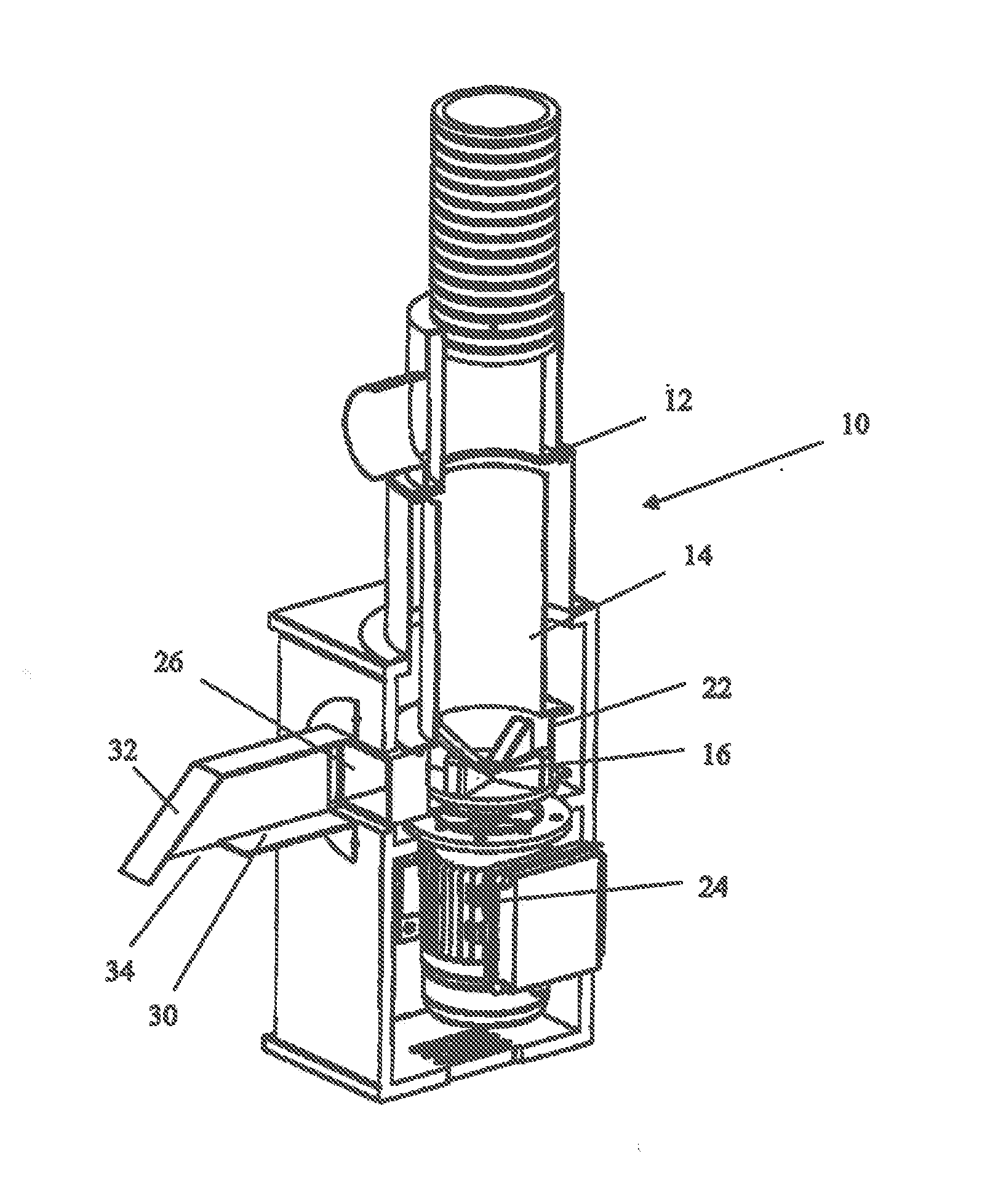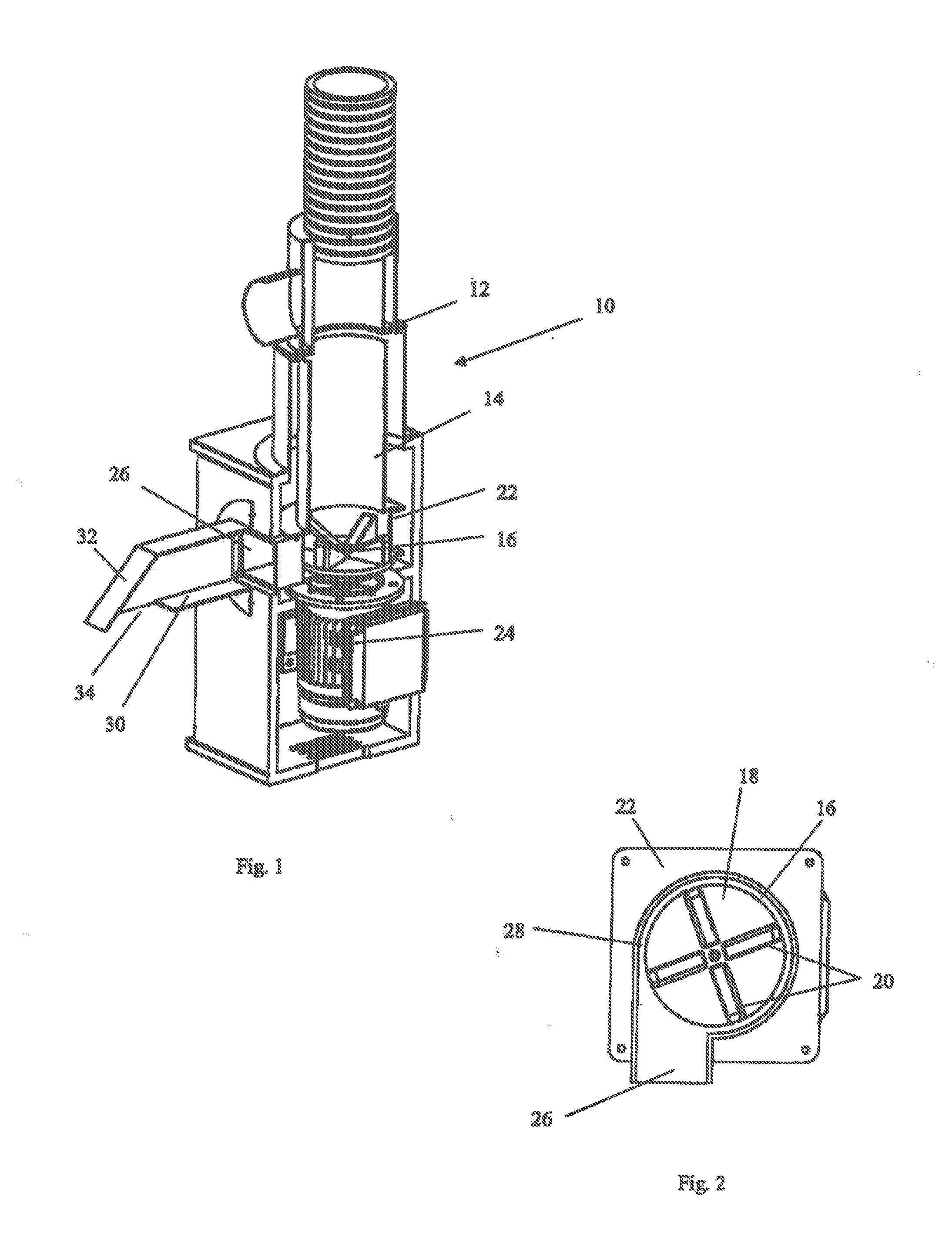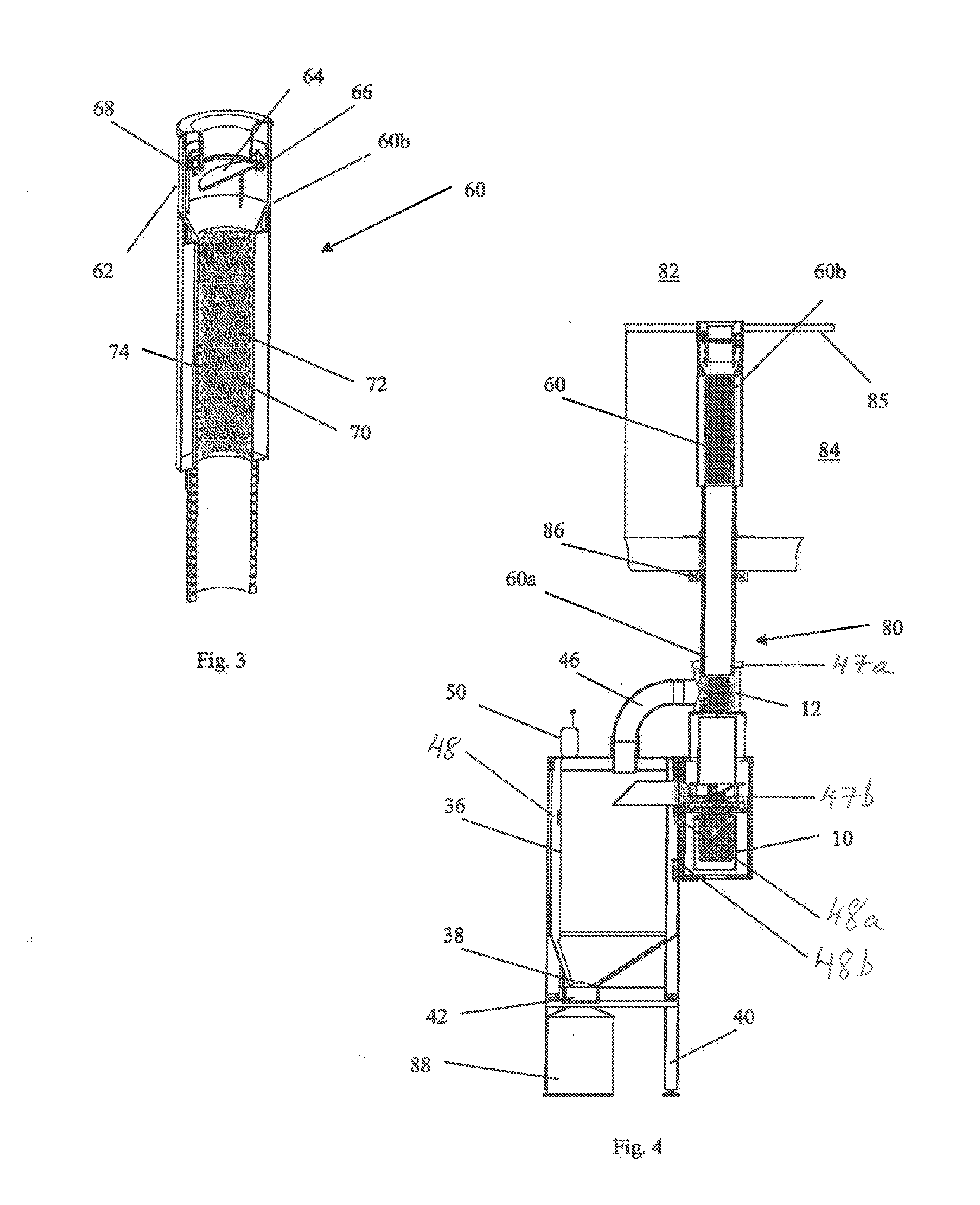Device for breaking glass
a glass and glass fragment technology, applied in the field of improved glass devices, can solve the problems of affecting the operation of operators, affecting the operation of glass current separation, and causing noise from trucks collecting bottles, so as to reduce the sharpness of the edges of glass fragments, reduce the risk of operator use, and be quiet and safe to handle
- Summary
- Abstract
- Description
- Claims
- Application Information
AI Technical Summary
Benefits of technology
Problems solved by technology
Method used
Image
Examples
Embodiment Construction
[0043]The device disclosed herein is intended primarily, although not exclusively to be used in bars, and especially bars having a cellar beneath the bar—either directly beneath or to one side—to enable glass bottles to be disposed of readily and in a form convenient for transportation and recycling. However, the device is not limited to such an arrangement and can be used for example between floors of a building or also between a work surface and under bar. The bottles, in order to reduce the volume required for their storage prior to disposal and / or transport are broken into small pieces. Although the production of glass powder during the process is inevitable, the amount of powder is ideally as low as possible and the majority of the glass particles should have a diameter of from 5 mm-20 mm.
[0044]FIGS. 1, 4 and 7 show a glass breaking device 10, comprising an inlet 12 in the form of a substantially vertical circular conduit, which leads to an enclosed breaking chamber 14. At the ...
PUM
 Login to View More
Login to View More Abstract
Description
Claims
Application Information
 Login to View More
Login to View More - R&D
- Intellectual Property
- Life Sciences
- Materials
- Tech Scout
- Unparalleled Data Quality
- Higher Quality Content
- 60% Fewer Hallucinations
Browse by: Latest US Patents, China's latest patents, Technical Efficacy Thesaurus, Application Domain, Technology Topic, Popular Technical Reports.
© 2025 PatSnap. All rights reserved.Legal|Privacy policy|Modern Slavery Act Transparency Statement|Sitemap|About US| Contact US: help@patsnap.com



